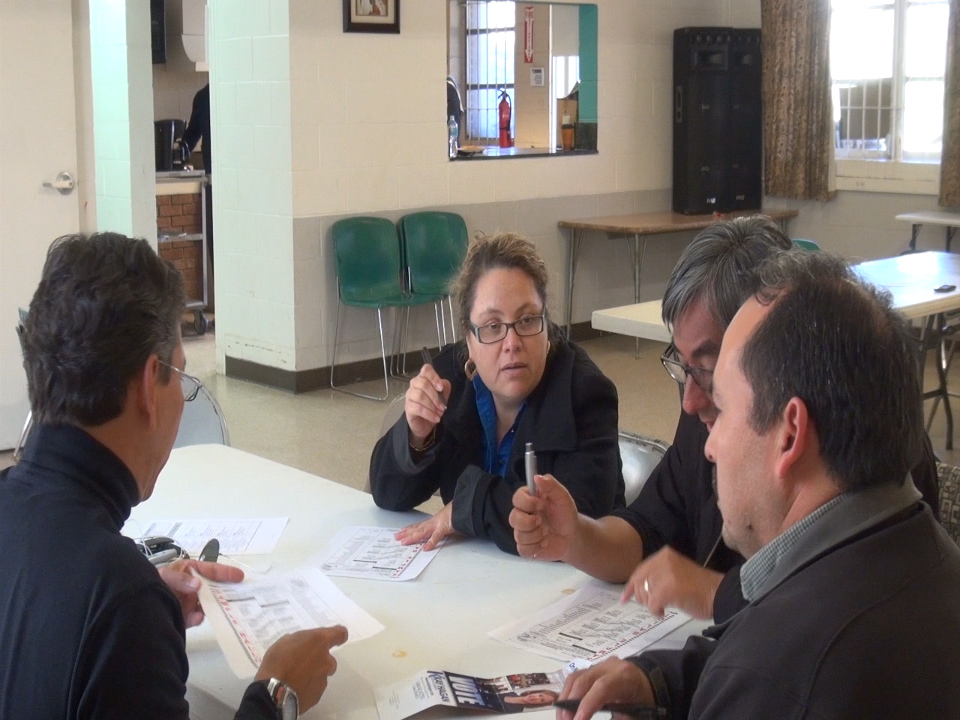RALEIGH — In Durham, Latino activists have been training and registering Hispanic voters leading up to the midterm election Tuesday. But the goal isn’t just short term — they’re looking two years ahead.
“This midterm election is only the dress rehearsal for what’s coming in the presidential elections in 2016,” said Ivan Parra, executive director of the North Carolina Latino Coalition.
The more that Hispanic voters register for this year’s midterms and have positive experiences voting, Parra said, the more registered Latinos can potentially turn out in 2016. And with a fast-growing Hispanic population, Parra said the Latino community is already a force to be reckoned with.
Many are becoming U.S. citizens. Those who are undocumented — often parents of U.S.-born Latinos — can still shape the viewpoints of those who can vote.
From 2000 to 2010, North Carolina was sixth among all states in growth of its Hispanic population, up by 111 percent, according to the U.S. Census Bureau. That’s a growth from 378,963 to 800,120.
The Washington-based Pew Research Center reports that the number of long-term undocumented residents has risen, but the influx of new immigrants has leveled off in the past few years. As of 2012, one-fifth of undocumented immigrants had been in the country for at least two decades.
While many in the Hispanic population here are still unable to cast ballots, their U.S.-born children are reaching the voting age of 18. Ivan Parra said the average age for registered Hispanic voters in North Carolina is 24.
Democracy North Carolina reported in 2012 that of 115,000 registered Latino voters, Democrats were the plurality at 44 percent, while 37 percent were unaffiliated. Latino voters make an estimated 4 percent of total voters in North Carolina. In a crucial swing state, that’s enough to give the Democratic Party an edge.
But some 100,000 additional eligible Latino voters aren’t registered.
In Durham, the North Carolina Latino Coalition is an umbrella organization working to strengthen the Latino voice in local, state and federal issues. Its focus this year has been outreach to potential Hispanic voters, helping them through the voter registration process. Many are first-time voters, said Mauricio Castro, Latino Coalition community organizer.
Immigration law is a priority for Latino voters, Parra said, and many feel dissatisfied with the lack of action on reform legislation in Congress. Parra said every Latino in North Carolina has been touched by someone who is undocumented.
“The conditions of those that are here without documents are very prominent to Latino voters here,” he said.
Other issues include access to health care, jobs and education.
The coalition is nonpartisan; its goal is to simply inform voters on where the candidates stand on issues that are important to Hispanics. Parra said he made efforts to reach out to both Senate candidates Kay Hagan, D-N.C., and Republican Thom Tillis, Speaker of the North Carolina House. Tillis’ campaign ignored them, he said, suggesting “they made the calculation that they decided it would hurt their campaign” to associate with immigrant communities.
Tillis’ campaign had no immediate comment when contacted.
“For this election they don’t need us,” said John Herrera, the first Latino immigrant in North Carolina to be voted into office as alderman in Carrboro in 2000. Herrera said Republicans are now only concerned with taking over the U.S. Senate. “But in 2016 they will be asking us for the meeting.”
Hagan met with leaders from 55 different Latino organizations and was asked questions on her support for immigration reform. She said she would support reform through Congress but not executive action by the president. Mauricio Castro, Latino Coalition community organizer, said its members appreciated her willingness to at least address her viewpoints on subjects that were important to them.
“I know who wants to talk to us, who wants to listen to us and at least has the courtesy to respond to the call,” he said. “That might be my best answer to who I might be voting for.”


